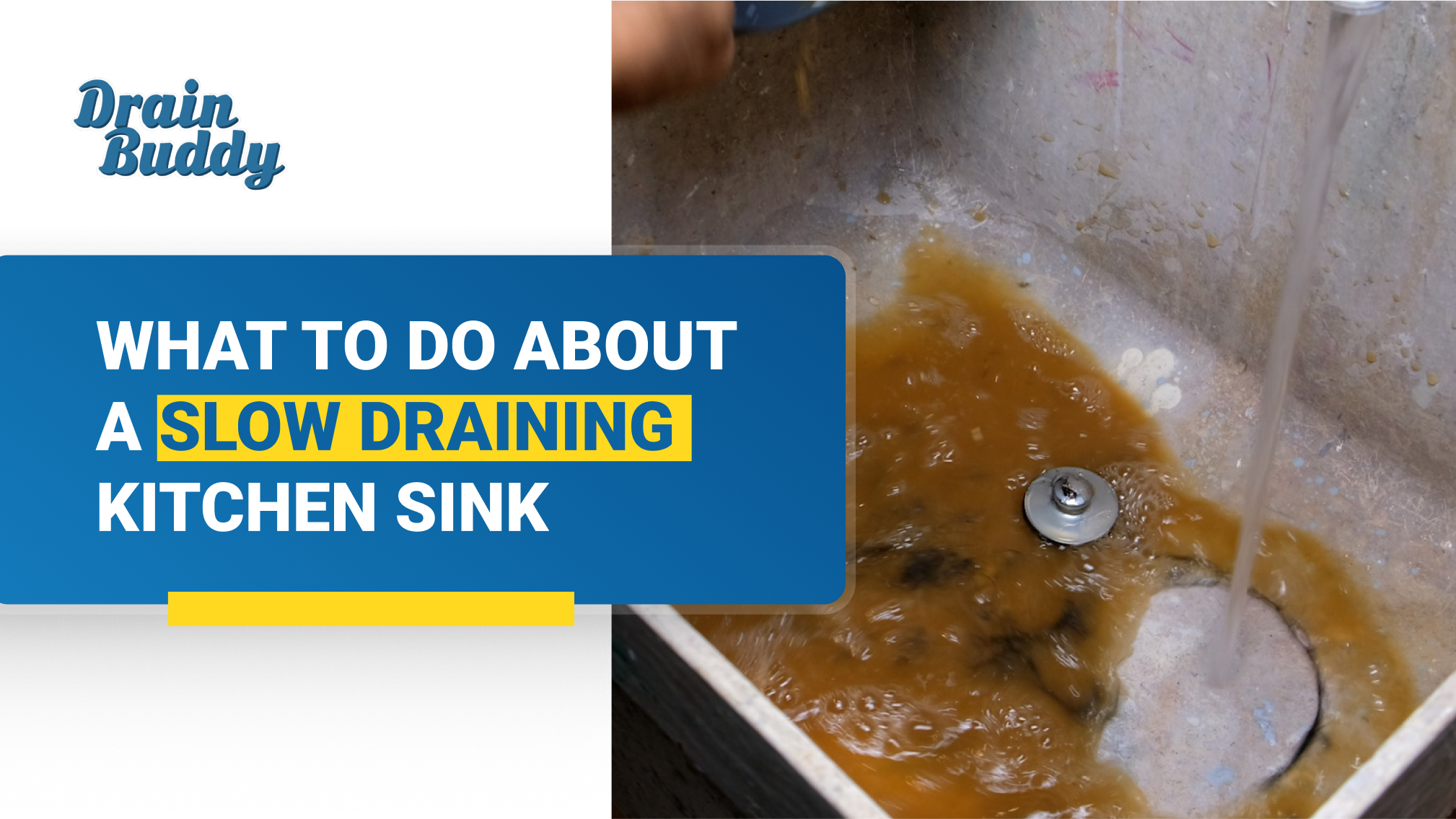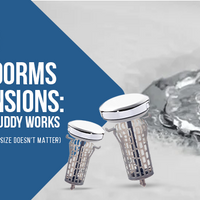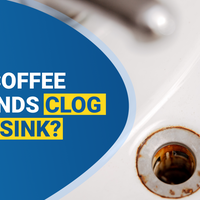Summary:
- Plunging, boiling water, and baking soda with vinegar are quick fixes to address minor kitchen sink clogs caused by grease or organic buildup.
- For stubborn clogs, a drain snake or cleaning the P-trap can effectively tackle deeper blockages.
- Persistent issues like multiple clogged drains or foul odors require professional plumbing intervention.
- Preventive habits, such as using Drain Buddy’s 2-in-1 stopper, catch debris before it causes clogs, saving time and hassle.
- Regular maintenance with natural solutions keeps drains flowing smoothly and extends the life of your plumbing.
A slow-draining kitchen sink can turn a routine chore into a frustrating ordeal. That pool of standing water signals a clog forming beneath the surface, and ignoring it risks complete blockages, unpleasant odors, or even costly plumbing repairs.
Acting early is key to restoring your sink’s flow and preventing bigger issues. From simple at-home fixes to preventive strategies featuring Drain Strain’s Drain Buddy Ultra Flo Sink Stopper & Hair Catcher, this guide walks you through practical solutions to keep your kitchen drain clear.
Quick Fixes to Try First
Start with these straightforward methods to address a slow-draining kitchen sink before diving into more involved solutions.
Plunge the Drain
How: Use a cup plunger designed for sinks to dislodge debris. Fill the sink with enough water to cover the plunger’s bell, place it over the drain, and plunge forcefully.
Tips:
- Seal the sink’s overflow opening with a rag or duct tape to maximize suction.
- Use steady, consistent plunges to break up the blockage.
When: This is the first step for a sink that drains slowly but isn’t fully blocked. For example, a sink sluggish after washing greasy dishes often responds well to plunging.
Pour Boiling Water
How: Boil a full kettle of water and pour it slowly down the drain in two to three stages, pausing to let it work between pours.
Why: Boiling water melts grease and softens organic residue clinging to pipe walls, restoring flow.
When: Try this after plunging if the sink remains slow, especially if grease from cooking is the likely culprit.
Baking Soda + Vinegar
How: Pour one cup of baking soda down the drain, followed by one cup of white vinegar. Let the mixture fizz for 15–30 minutes, then flush with hot water.
Tips: Cover the drain during fizzing to contain the reaction and enhance its effectiveness.
When: This method works well for clogs caused by organic matter or grease buildup, such as food scraps left in the sink after meal prep.
Tackling Deeper Clogs
If quick fixes don’t resolve the issue, these methods target more stubborn blockages deeper in the plumbing.
Use a Drain Snake
How: Insert a drain snake into the drain, twisting it as you feed it in to hook and remove debris. Pull it out slowly to extract the clog.
Tips: Wear gloves to stay clean and avoid forcing the snake, which could damage pipes.
When: Use this when plunging or boiling water fails, and the sink continues to drain slowly. For instance, a sink clogged with compacted food scraps may require a snake to clear the blockage.
Check the P-Trap
How: Place a bucket under the U-shaped pipe (P-trap) beneath the sink. Unscrew the trap, dump its contents, and clean it with a bottle brush before reattaching.
Why: The P-trap often collects grease, food particles, and debris, causing slow drainage or backups.
When: Try this if gurgling sounds or standing water persist after other methods, indicating a blockage in the trap itself.
When to Call a Plumber
Some issues go beyond DIY fixes and require professional expertise. Call a plumber if you notice:
- Multiple clogged drains at once, suggesting a problem in the main line.
- Persistent slow drainage despite trying all at-home methods.
- Foul odors or strange noises may indicate venting issues or deep blockages in the plumbing system.
- Addressing these early can prevent more extensive damage and keep your kitchen functional.
Prevention Tips
Preventing clogs is simpler and more cost-effective than fixing them. Adopt these habits to keep your kitchen sink draining smoothly:
- Avoid pouring grease or oil down the drain, as they solidify and trap debris over time.
- Use a drain strainer to catch food scraps before they enter the pipes.
- Perform monthly maintenance by flushing the drain with boiling water or a baking soda and vinegar mixture.
Install Drain Strain’s Drain Buddy Ultra Flo Sink Stopper & Hair Catcher, which fits most sinks and captures food debris with its 2-in-1 design. Its six recyclable replacement baskets make long-term clog prevention effortless, as seen in households that rely on it to keep drains clear after heavy meal prep.
FAQs
Why does my sink gurgle?
A gurgling sound typically indicates air trapped in the pipes due to a partial clog or improper venting. Addressing clogs with a plunger or snake often resolves this, but persistent gurgling may require a plumber to check the venting system.
Are chemical drain cleaners safe?
Avoid chemical drain cleaners, as they can corrode pipes over time, leading to leaks or costly repairs. Mechanical methods like plunging or natural solutions like baking soda and vinegar are safer and more effective for routine maintenance.
How often should I clean the P-trap?
Clean the P-trap every three to six months as part of regular maintenance, or sooner if you notice slow drainage, gurgling, or unpleasant odors.
Final Word
A slow-draining kitchen sink doesn’t have to derail your day. With simple techniques like plunging, boiling water, or cleaning the P-trap, you can restore flow and tackle clogs effectively.
To prevent future issues, rely on smart habits and innovative tools like Drain Buddy’s Ultra Flo Sink Stopper & Hair Catcher. This installation-free 2-in-1 solution traps debris before it causes blockages, keeping your drains clear and your kitchen stress-free.
Discover smarter drain protection with Drain Buddy Ultra Flo. Visit Drain Strain to learn more and order yours now! Take charge of your plumbing today and enjoy a smoother, cleaner home.







